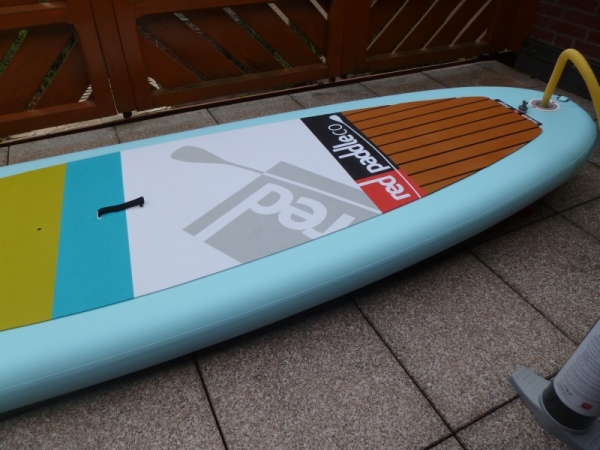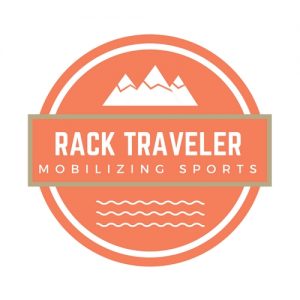
How Do You Transport A Paddleboard
Gliding on the water gives us a sense of freedom we can’t find anywhere else. It allows us to get a way from the daily grind and clear our minds. The only problem we may encounter is getting our paddle boards to the water in a safe and secure manner.
We will give you some great ideas and tips on how to get your SUP to the water safely. All of these ideas we will share are pretty reasonable and make it convenient to secure your boards and avoid damage to your equipment.
We hope to answer your questions on the different ways you can mobilize your SUP.
Carrying a SUP
How do you transport a paddleboard by carrying it? It’s very common that SUP boards have carry handles on the center of the boards. If you own a board already you may be familiar with this method. If you don’t, we’ll explain this pretty simple process below.
1. You simply stand the board on its side, so that the nose is facing forward and the base is next to you.
2. Then you simply reach over the top edge of the board, grab the handle, and lift it.
Carrying Tips
• Don’t hurt your back – Make sure your properly bending your knees and only carry items your strong enough to carry.
• Carrying carts – If you think you will have trouble carrying your SUP, use a small push cart designed for carrying SUP’s.
• Strong winds – This isn’t something I usually experience, but I have dealt with it in certain locations. Just be careful picking up the SUP in a windy environment and possibly losing your balancing and hurting yourself. A strong crosswind can possibly move your board around when you pick it up, so be ready.
• Carrying the paddle – A simple trick when carrying your paddle is to tuck it when your carrying the board. Simply put the paddle between the board and the arm your carrying it with.

Transporting Your SUP On A Vehicle
How do you transport your paddleboard on a vehicle? This all depends on the type of vehicle and rack you own. Now with SUP’s you don’t have as many options as bikes, because of the length and shape of the boards. The most common option is some form of a roof rack.
The best way to determine how to carry your SUP is by understanding your vehicle type. If you have a truck you can easily lay the board on the bed partially supported by the tailgate. If you do not own a pick up truck you pretty much have to get a roof rack for your board.
4 Ways to transport your SUP:
• Crossbars: Crossbars are on the top of vehicles usually going across the vehicles roof and attaching to rails. These system as sometime come factory installed or you can purchase them from a supplier. If you have a pickup you should be able to find a secure crossbar for that scenario.
• Pads: Pads are usually very economical. Like most products when choosing the cheaper route you lose out on quality. Pads won’t be as secure as crossbars, but for short trips they are worth it. They also come with the added convenience of being able to easily remove them from your vehicle after use.
• Cam straps: Cam straps are basically tie down straps. You should be able to find them for a good price. The only drawback would be minor damage to your equipment and vehicle.
• Carrying carts – If you think you will have trouble carrying your SUP use a small push cart designed for carrying SUP’s.
Tips For 1 or 2 people loading the SUP
The crossbar and pad systems make it easy to put the boards on top of the vehicle. The pads may come with straps for tying down the board. The cam straps come with the straps alone allowing you to securely tie the board down.
2 People Loading
Some boards can be pretty big and oddly shaped, sometimes making it difficult for one person to put it on top of the vehicle. If you have an extra person you can each lift one side of the board placing it deck side down and making sure the fin is towards the front of the vehicle.
1 Person Loading
Cars
• Lean the board on the side of the car
• Make sure the fin is towards the front of the vehicle
• Grab the handle securely and with your other hand lift the upper edge
• Once you lift it, rest it on your knees and grab the opposite edge with the hand
• Place it on the cross bar or pads
Trucks
• The fin should be closer the rear of the vehicle with deck down
• Lift the board from the tail end onto the back of the vehicle
• Then you can easily slide the board up and moving it forward
• Place your board deck down and fin forward near the back of your vehicle.

Additional Tips When Transporting SUPs:
• Don’t forget your paddle:Make sure you don’t forget your paddle after doing all the work to load it on to the vehicle. Remember to either put the paddle in the vehicle or load it on to the rack if you have that option.
• Long board always goes first: This may seem like common sense, but you would be surprised on what we’ve seen. Always put the longest board down first if you’re loading multiple boards. If you have a small piece of foam or a protective layer put it in between the boards to avoid damage. Longest board on the bottom and the shortest on the top.
• Padding the pickup:The last thing we always want to do is damage your board or your vehicle. Purchase some padding for the tailgate and strap it down so it doesn’t move around and scratch. Some users prefer to put a red flag as a warning to other drivers and it may be required in certain towns.
back to menu ↑How Do You Tie Down a SUP
How do you transport a paddleboard by tying it down? If you have a crossbar rack system you shouldn’t have to tie it down. For the most part these systems have clamps to securely hold the board.
If you’re using pads or foam blocks to transport your boards you should purchase cam straps. It’s the most secure an east way to transport you SUP.
How do you tie down a SUP with Cam Straps:
• Lay the board parallel to your vehicle and make sure the middle of the board or widest part of the board is centered between the crossbar.
• Place the buckle of the cam strap on top of the board near the edge of it, close to the crossbar. Toss the opposite end of the strap over to the other side of the vehicle.
• Once your on the opposite side of the vehicle grab the strap and loop it under and over the board. Just make sure the strap is on the inside of the crossbar to avoid it from slipping completely off the board.
• Go back to the side of the vehicle where you placed the buckle and loop the strap under the crossbar then up and into the buckle and tighten it. Just make sure the strap is on the inside of the crossbar to avoid it from slipping completely off the board.
• Repeat the process for the other cam strap
• Once both straps are placed tighten them, but be sure to not tighten them too much to avoid damage to the SUP.
• Once tightened tie the remaining ends of the strap below the buckle and to the crossbar. Doing it this way helps you avoid flapping of the straps.
• As a safety precaution try to move the board to make sure it‘s secure.
SUP tie down tips:
• Knots: No need to go overboard when knotting your straps. As long as you follow the directions above you should be fine. Just easily knot the remaining strap to avoid it from flapping.
• Taller vehicle:Ask a second person to help you if you have a taller vehicle or follow our directions above. If you’re by yourself try using a step stool, but always practice safety first. A step ladder may make it easier to reach the top of the vehicle.
• Center the board:Make sure the wide part of the board is centered in between the two straps so the board is more secure during transport.
• Locks:Many users are always worried about someone robbing their equipment when they leave it unattended. If you do have this worry purchase locking cam straps with key locks. It’s a safer option if you’re worried about safety.
• Drive then check:It’s always a good idea to drive for a little and then pull over at a safe location and just look at the straps and maybe move the board a little just to make sure its holding tight. You don’t want to hurt anyone while driving.
We hope we answered your how do you transport a paddleboard question. If you enjoyed our post please share it with other reader and SUP members to help guide them on their journey. If you’re interested in safety tips check out this article we liked.
1. Bike Racks:
- Best Bike Hitch Racks
- Best Bike Roof Racks
- Best Spare Tire Bike Racks
- Best Trunk Bicycle Racks
- Best Bike Truck Racks
2. Kayak Racks:
3. Cargo Carriers:
4. SUP and Surfboard Racks:
5. Ski and Snowboard Racks:








